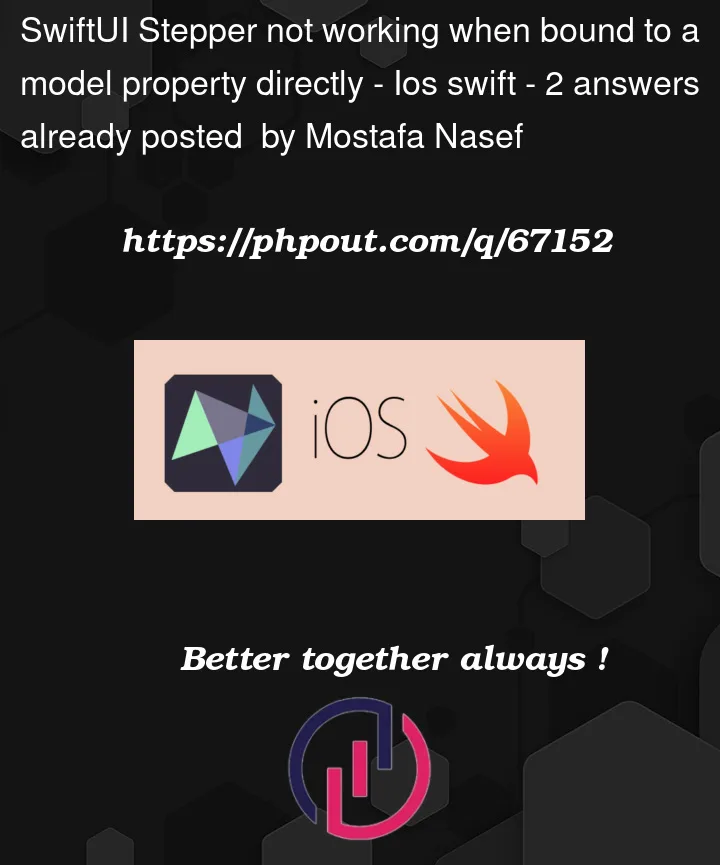I am fairly new to iOS development. I am trying to update the property "cars" in the "Sire" model using a stepper. Whenever I press on + or – from the stepper controls, it changes the value by a step and then becomes disabled.
If I bind the stepper to the variable cars, it works flawlessly.
struct AddSireView: View {
// @EnvironmentObject var sireVM:SiresViewModel
@State var newSire = Sire (id:"", name: "", ownerID: 0, info:"", achievments: "", cars: 0, cups: 0)
@State var cars = 0
@State var cups = 0
@State private var state = FormState.idle
var createAction: CreateAction
// TODO: Put validation that the added sire is valid and if not show errors to the user
var body: some View {
Form {
VStack (spacing: 18) {
TitledTextView(text: $newSire.name, placeHolder: "الاسم", title: "الاسم")
TiltedTextEditor(text: Binding<String>($newSire.info)!, title: "معلومات البعير")
TiltedTextEditor(text: Binding<String>($newSire.achievments)!, title: "انجازات البعير")
}
Stepper(value: $newSire.cars, in: 0...10,step:1) {
HStack {
Text ("سيارات:")
TextField("Cars", value: $newSire.cars, formatter: NumberFormatter.decimal)
}
}
And this is the "Sire" struct
struct Sire: Hashable, Identifiable, Decodable {
static func == (lhs: Sire, rhs: Sire) -> Bool {
lhs.id == rhs.id && lhs.name == rhs.name && lhs.ownerID == rhs.ownerID
}
func hash(into hasher: inout Hasher) {
hasher.combine(id)
hasher.combine(name)
hasher.combine(ownerID)
}
var id:String
var name:String
var ownerID:Int
var fatherID:String?
var info:String?
var achievments:String?
var cars:Int = 0
var cups:Int = 0
init (id:String, name:String, ownerID:Int, info:String? = nil, achievments:String? = nil,
fatherID:String? = nil, cars:Int = 0, cups:Int = 0) {
self.id = id
self.name = name
self.ownerID = ownerID
self.cars = cars
self.cups = cups
self.info = info
self.achievments = achievments
}
}
"Sire" was a class and i made it a Struct thinking that that was the problem, but to no avail.





2
Answers
Consider this approach using an
ObservableObjectto hold yourSire. This allows you to useboth the
Stepperand theTextfieldat the same time.Get rid of the custom implementations for
EquatableandHashable(func ==andfunc hash) you don’t includecarsin it so SwiftUI doesn’t know when to reload.SwiftUI is all about identity if you change how Swift computes the identity (using
Hashable,EquatableandIdentifiable) you change the behavior.Check out Demystify SwiftUI
The video above is the "best" place to learn about the concept.